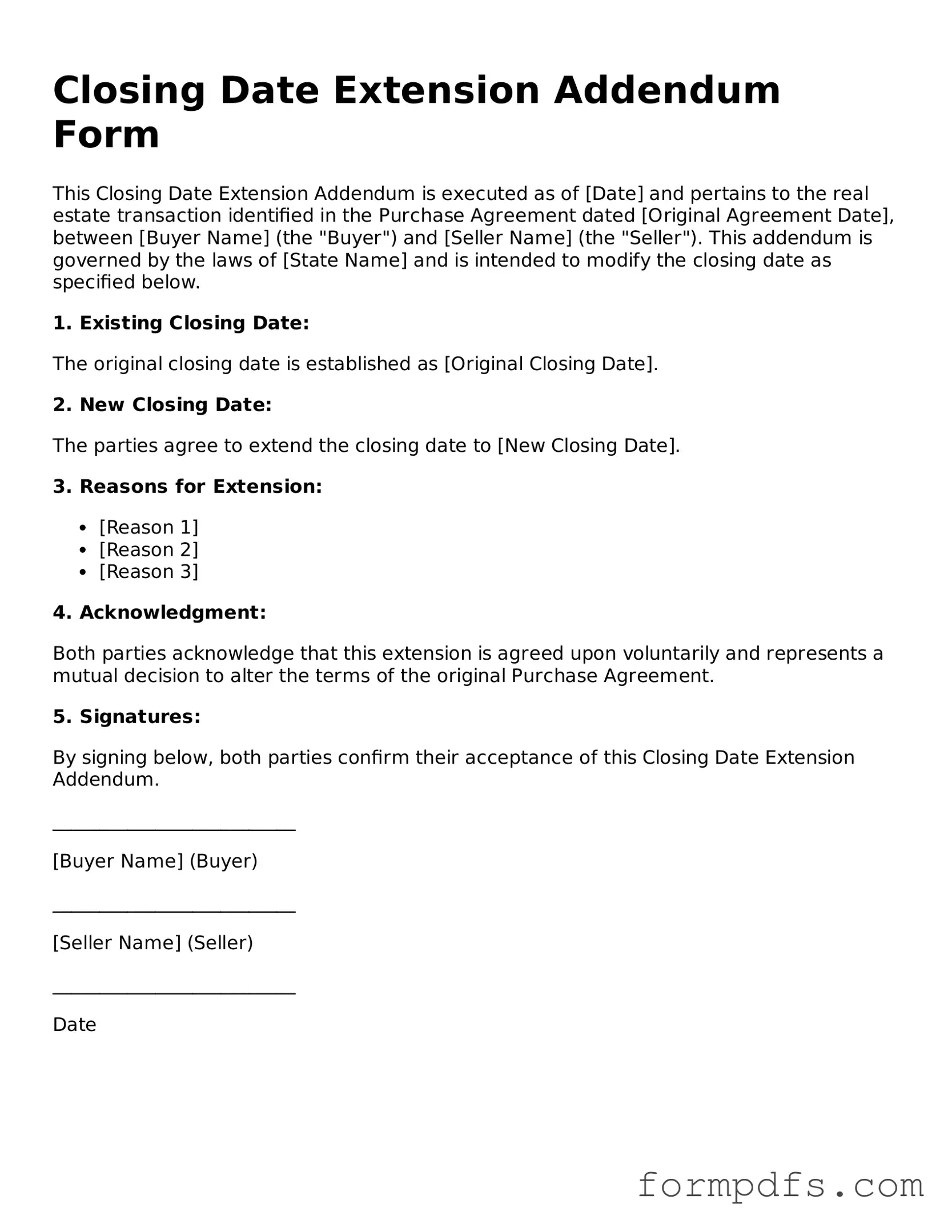In real estate transactions, timing is everything. When unforeseen circumstances arise, buyers and sellers may find themselves needing more time to complete the sale. This is where the Closing Date Extension Addendum Form comes into play. This essential document allows parties to extend the closing date originally set in the purchase agreement, ensuring that both sides have adequate time to fulfill their obligations. By clearly outlining the new closing date and any pertinent conditions, this addendum helps prevent misunderstandings and potential disputes. Additionally, it serves to protect the interests of both the buyer and the seller, allowing for a smoother transaction process. Understanding how to properly utilize this form can significantly ease the stress of navigating real estate deals, making it a vital tool in any property sale or purchase. Whether you're a seasoned investor or a first-time homebuyer, grasping the nuances of this form can empower you to manage your real estate transactions more effectively.
